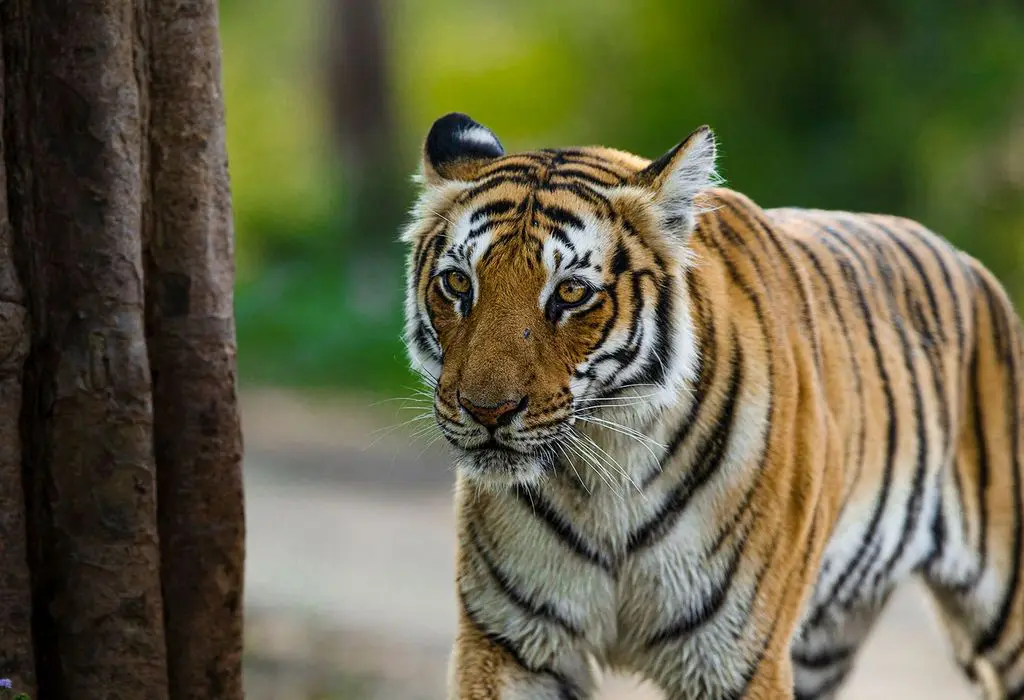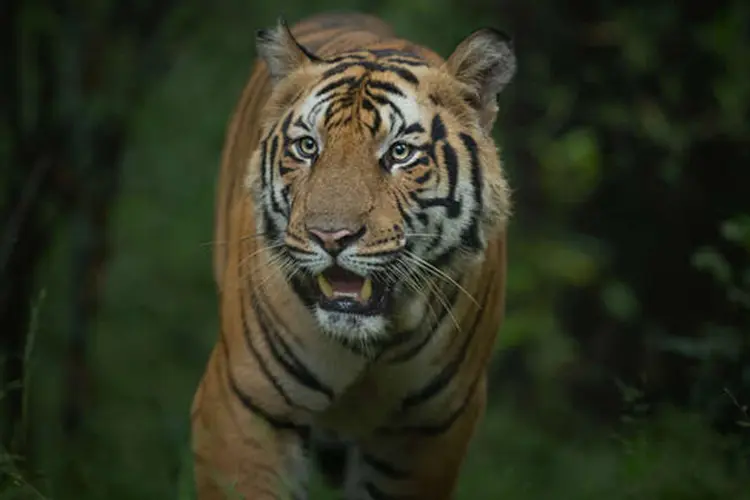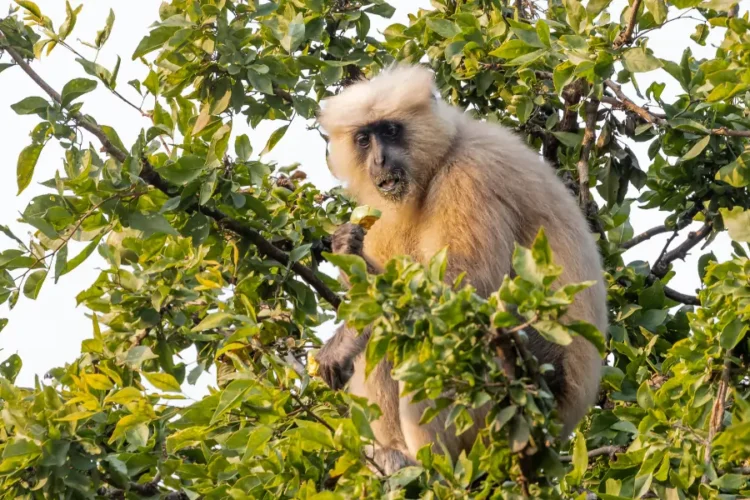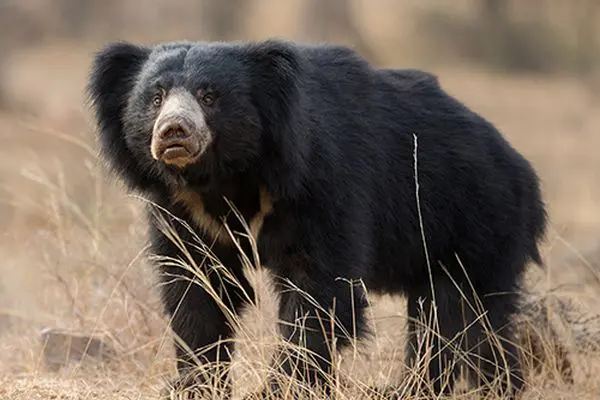
Jim Corbett National
Park
uttarakhand
About Jim COrbett National Park
Nestled at the base of the mighty Himalayas, the lush terrain of Corbett National Park supports a thriving diversity of life. Often hailed as one of the most scenic national parks to witness a tiger in the wild, Corbett is a breathtaking expanse of moist deciduous montane forest. This biodiverse sanctuary is home to tree species like Sal, Chaur, Khair-Sissoo, Ber, Peepal, Dhak, and Tendu, which make up a fraction of the nearly 600 recorded flora species. Sprawling across 520 sq. km along the Ramganga, Kosi, and Sonanadi rivers, this protected forest was originally founded as Hailey National Park on August 8, 1936, named after Sir Malcolm Hailey, then Governor of the United Provinces.
In 1957, it was renamed Corbett National Park in tribute to the celebrated naturalist Jim Corbett. A legendary hunter-turned-conservationist and author, Corbett played a vital role in outlining the park’s boundaries and establishing it as a sanctuary. Today, Corbett is regarded as one of India’s most captivating destinations for avian and terrestrial wildlife. Out of the 1,300 bird species and subspecies found in the Indian subcontinent, over 500 have been recorded here, making it a haven for bird watchers.
Notable sightings include the Great Hornbill, Himalayan Rubythroat, Long-tailed Broadbill, Chestnut-headed Bee-eater, Blue-tailed Bee-eater, Pallas’s Fish Eagle, Lineated and Great Barbets, Kaleej Pheasant, and Brown Dipper. Impressively, 49 of India’s 69 raptor species have been spotted within Corbett’s bounds. Beyond its avifauna, the park also shelters iconic species such as the Royal Bengal Tiger, Asian Elephant, Leopard, Barking Deer, Rhesus Macaque, Spotted and Sambar Deer, and the elusive Yellow-throated Marten—each adding to the rich tapestry of life in this natural paradise.
Corbett National Park radiates a quiet, tranquil charm—making it a perfect safari retreat to truly unwind in nature.
In India, every national park is systematically divided into three distinct zones: Core, Buffer, and Reserve. The Core Zone is the most protected section of the forest where human interference is strictly prohibited. It reflects the untouched natural ecosystem and is carefully safeguarded by the forest department. The Buffer Zone serves as a transitional area where wildlife and limited human activity coexist. Finally, the Reserve Forest acts as a peripheral boundary, offering additional protection to the park’s core areas.
Corbett National Park comprises four core safari zones: Dhikala, Jhirna, Bijrani, and Durga Devi. Among these, Dhikala is particularly sought after, as it offers the rare opportunity to stay overnight in one of India’s oldest and most iconic Forest Rest Houses. Few national parks provide this kind of immersive experience. To awaken within the very heart of a thriving tiger reserve and embark on a morning safari from deep inside the jungle is truly unforgettable.
Adding to Corbett’s allure is its famed tiger lore—especially the stories of Dheeto and Khali. The tigress Dheeto earned her name from her determined and defiant nature, while Khali, a massive male, was named after the WWE wrestler The Great Khali, thanks to his enormous size and intimidating presence.
So, when setting out on your tiger safari in Corbett, be sure to ask your naturalist or driver about these legendary cats whose tales echo through the sal forests of this majestic reserve.
Tiger Tours in Jim Corbett National Park
Explore some of the best Tiger Safari Tours in Jim Corbett, guided by our expert team…
History
Hailey National Park, one of India’s first national parks, was renamed Corbett National Park in 1936. The area was once owned by the princely state of Tehri Garhwal, which gave a portion of the land to the East India Company for helping drive out the Gurkhas. It was also inhabited by the Boksas, a Terai tribe that farmed cereals until the British evicted them in 1860.


Both the park and its surroundings have undergone numerous name changes. Its name was first changed from Hailey National Park to Ramganga National Park in 1954–1955, and then it underwent a second name change to Corbett National Park in 1955–1964. The park’s current name, Corbett National Park, was chosen in honour of renowned novelist and wildlife conservationist Jim Corbett, who was also instrumental in its founding.
When British commander Major Ramsay took control of the area in the early 19th century, it began gaining attention. In 1868, the British Forest Department restricted agriculture and set up livestock stations, marking the start of preservation efforts. Recognising its uniqueness, Britons like E.E. and R. Stevans, and A. Smythies, proposed it be declared a sanctuary. A game reserve was suggested in 1907. In 1930, Jim Corbett led the demarcation of the area, and it was established as Hailey National Park. Hunting of birds, reptiles, and mammals was banned. The park, however, suffered heavily during WWII due to poaching and timber felling.

Royal Bengal Tiger

Hog Deer

Asian Elephant
Top Species in Jim Corbett National Park

Indian Leopard

Terai Langur

Sloth bear
Enquire Now
Please fill the form below and our team will get back to you within 24 hours with a perfect safari package.



